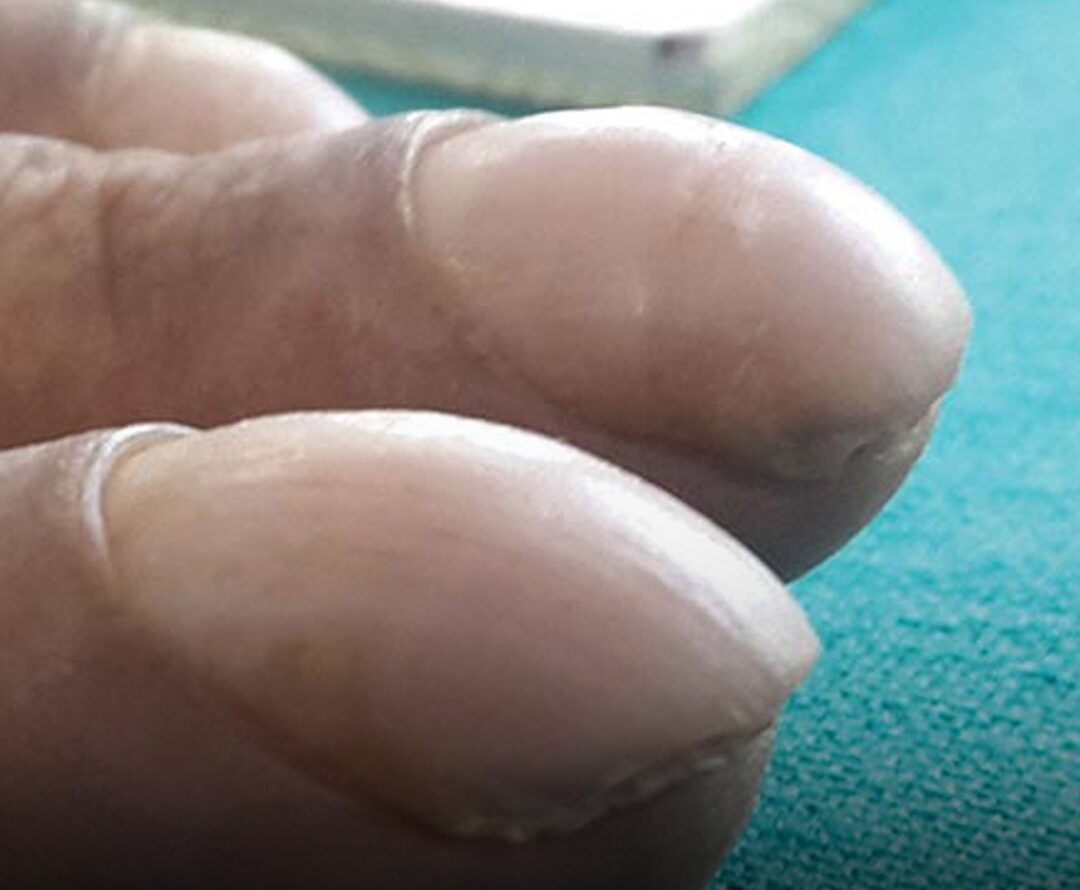‘Clubbing’ explained as major change to finger could be sign of deadly disease
While the ‘clubbing’ condition might simply look unusual, it could be a sign of a deadly disease that needs to be addressed immediately.
The human body is unendingly complex, but there can be both subtle and obvious clues that something isn’t quite right.
Due to this, it can be easy to brush off some of the signs and just assume things will get better; in truth, sometimes a headache is just a headache.
However, ‘clubbing’ can be hard to ignore, and experts have argued against just ignoring it.
According to the Cleveland Clinic, clubbing or nail clubbing is a drastic change in the appearance and structure of your fingernails or toenails.
Your nails can take on an appearance that looks similar to an upside down spoon and they can also look wider or swollen.
As well as this, they can feel soft or sponge-like, be warm to the touch and look red.
The condition can also impact only a few of your nails or all of them, but more commonly starts on the thumb and forefinger before spreading.
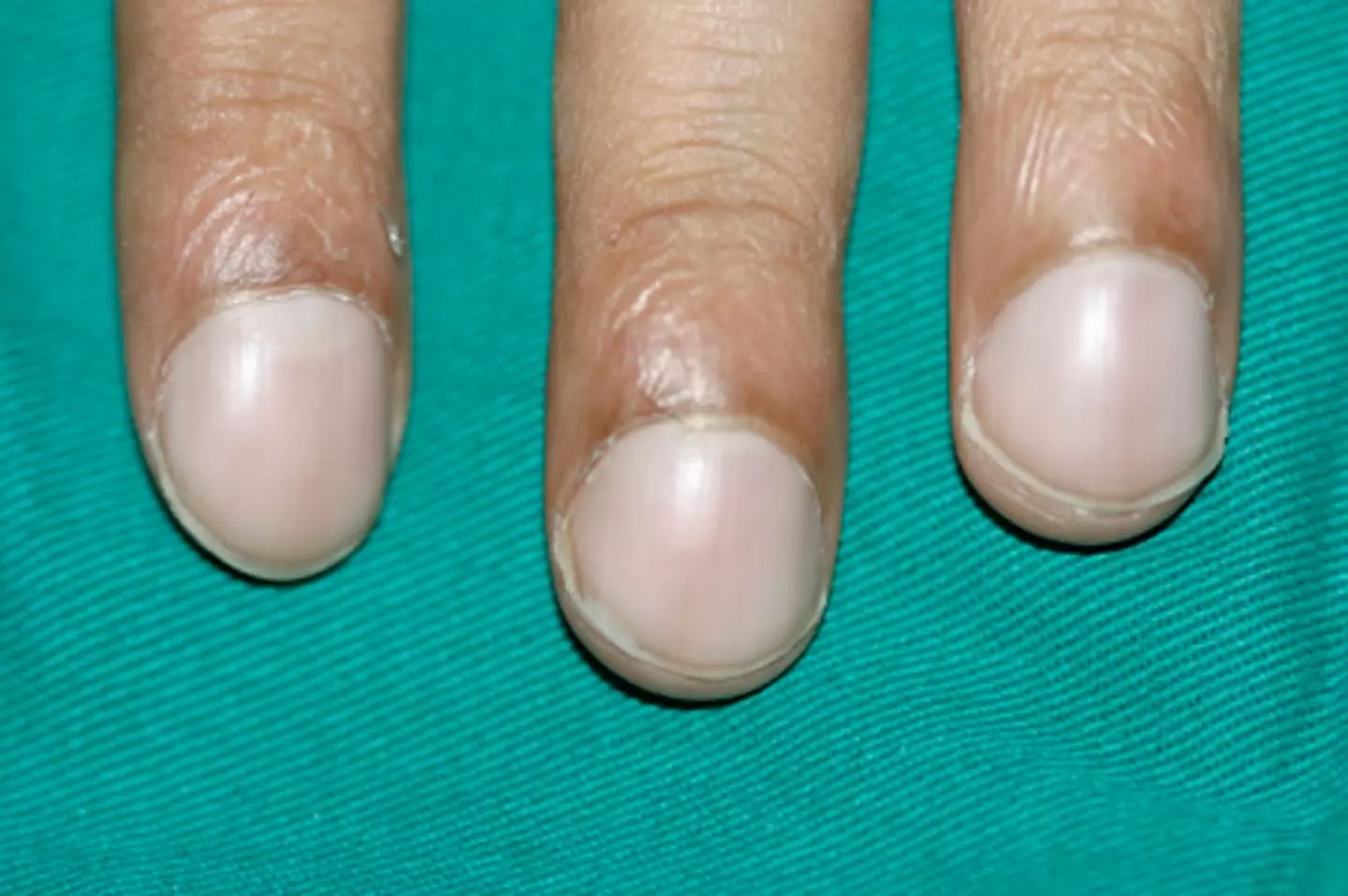
What nail clubbing can look like (Dr Murlidhar Rajagopalan)
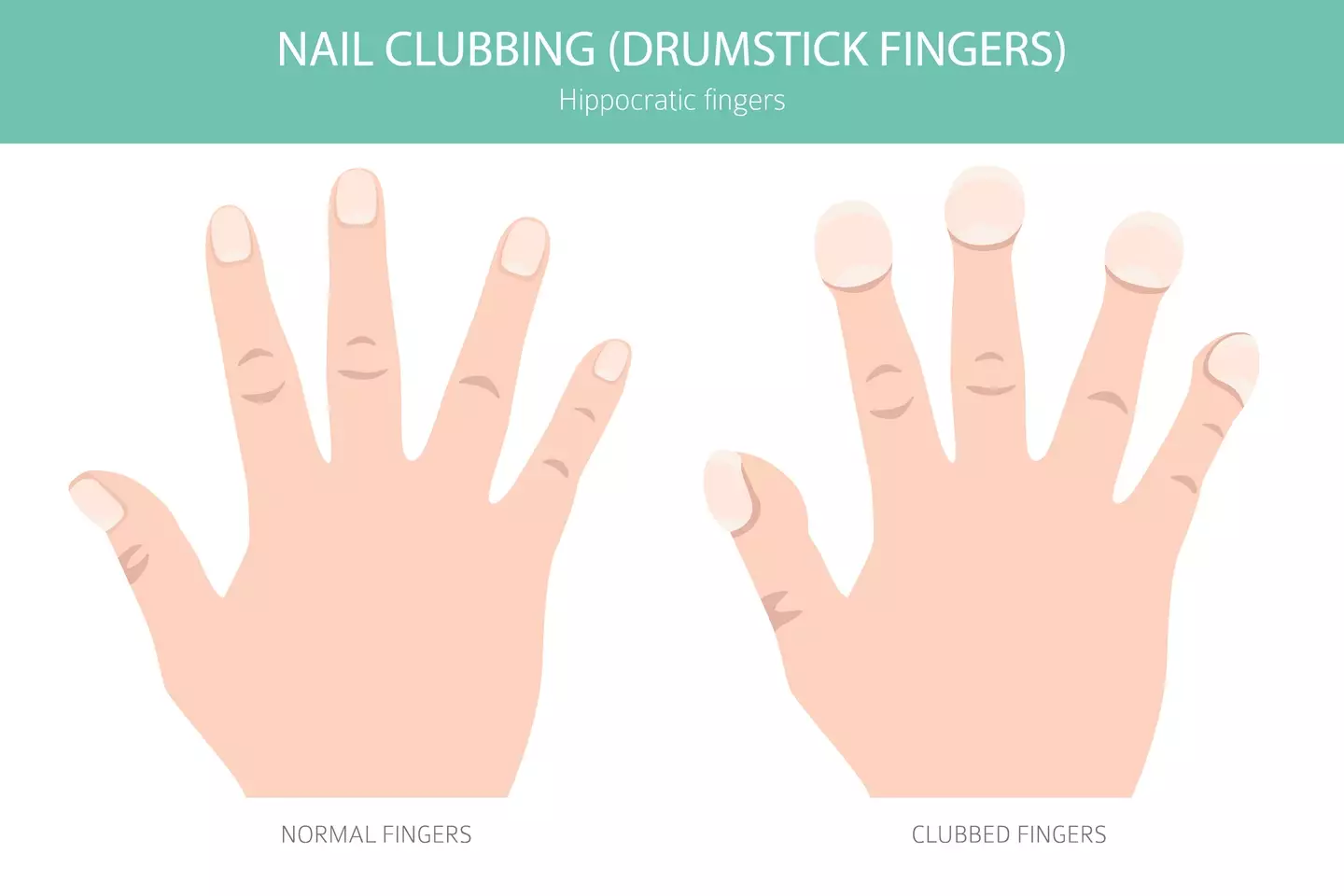
What clubbing looks like (Getty Stock Image)
While it may just give your nails a strange look or feeling, it could be a sign of lung cancer as well as other serious conditions.
According to the clinic: “Nail clubbing is most often associated with diseases of the heart and lungs, like lung cancer, lung infections, interstitial lung disease, cystic fibrosis or cardiovascular disease.”
In addition to clubbing, dark lines forming under the nail can also indicate a problem.
According to a Mail Online report, a podiatrist at London’s Guy’s and St Thomas’ Hospital, Dr Chin Kai Huang, stated: “One of the most common changes we see in clinics that requires further investigation is clubbing, where the inside of the nail begins to dome.”
“This can be a sign of liver disease, lung conditions and gastrointestinal problems.”
He added that lines or striations forming under the nail, in admittedly rare cases, also indicate a type of melanoma.
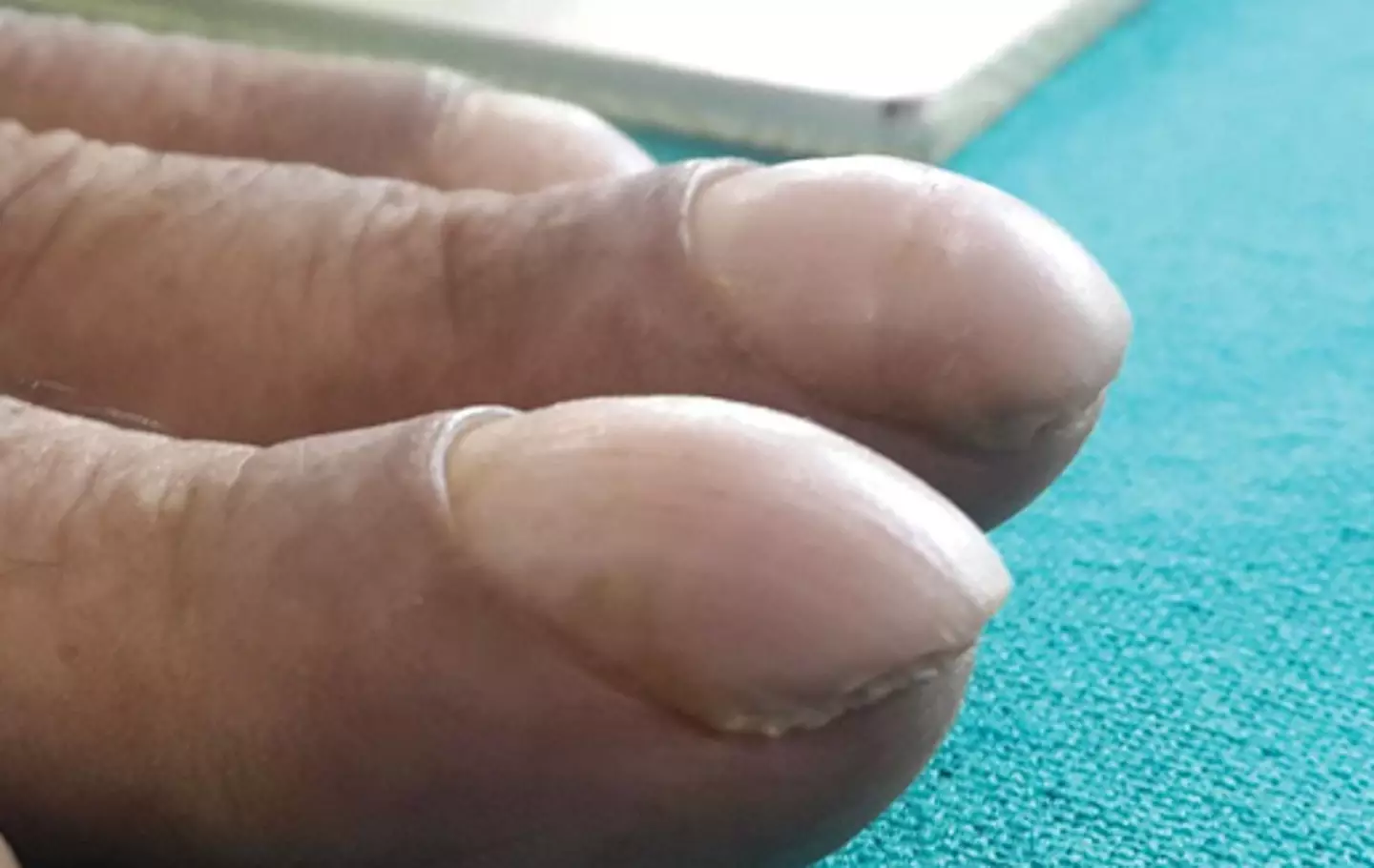
Clubbing can change the structure and appearance of your nails (Cleveland Clinic Journal of Medicine)
Doctors have also encouraged people to speak to their healthcare professionals if they notice something is off and start developing concerning signs, like clubbing.
A 2012 study by Dr Malay Sarkar, an India-based lung cancer specialist, discovered lung cancer is the primary cause of finger clubbing, linked to almost 90 per cent of cases.
However, it is important to note that nail clubbing affects around five to 15 per cent of people with lung cancer.
Featured Image Credit: Cleveland Clinic Journal of Medicine

We all have those days when getting out of bed feels like climbing a mountain. Maybe you’ve had a late night, skipped breakfast, or just feel like your energy’s been zapped before the day’s even begun.
It’s easy to brush off constant tiredness as part of a busy lifestyle — the price we pay for long workdays, screens before sleep, and never really switching off.
But what if that feeling didn’t fade after a coffee or a nap? What if that bone-deep exhaustion lingered all day, every day, no matter what you did to fix it? Experts say there’s one particular morning symptom that shouldn’t be ignored, because it could be your body’s way of warning you about something far more serious.
According to doctors at Johns Hopkins Medicine, extreme fatigue that doesn’t go away with rest could actually be an early sign of cancer.

Extreme fatigue could be an early sign of cancer, according to experts at Johns Hopkins Medicine (Witthaya Prasongsin/Getty Images)
And while tiredness is something most people experience regularly, this kind of fatigue is very different from the usual post-work slump.
Experts from Johns Hopkins Medicine explained: “This isn’t fatigue similar to how you feel after a long day of work or play. Extreme fatigue that doesn’t get better with rest can be an early sign of cancer.”
“Cancer uses your body’s nutrients to grow and advance, so those nutrients are no longer replenishing your body. This ‘nutrient theft’ can make you feel extremely tired.”
Fatigue isn’t the only thing people should watch out for, but it’s one of the easiest symptoms to overlook.
The Johns Hopkins team adds that many things can cause tiredness, from stress to diet and poor sleep, but if the fatigue becomes ‘severe enough to affect your quality of life’, it’s time to talk to a doctor.

Female doctor talking with young woman in exam room (MoMo Productions/Getty Images)
The medical experts also list several other symptoms people often dismiss but shouldn’t.
Unexplained weight loss of 10 pounds or more, recurring fevers (especially at night or without signs of infection), and persistent pain are all red flags that may warrant further investigation.
Skin changes, too, can signal something’s off; these are things like yellowing of the eyes or fingertips (a possible sign of jaundice), or moles that start to change shape, size, or color.
While noticing any of these symptoms doesn’t automatically mean you have cancer, doctors say early detection makes all the difference.
The key takeaway from all of this is to pay attention to your body and don’t ignore symptoms that stick around.
If you’ve been affected by any of these issues and want to speak to someone in confidence, contact the American Cancer Society on 1-800-227-2345 or via their live chat feature, available 24/7 every day of the year.
Featured Image Credit: Getty Stock Image

There’s said to be more that 200 different types of cancer, and pancreatic cancer is one of the most prevailing types.
Pancreatic cancer makes up for around three percent of all cancers in the US and around eight percent of all cancer-related deaths.
It’s also more common in women than in men: it is the 10th most common cancer for American men, while it’s the eighth most common for women, says Cleveland Clinic.
While pancreatic cancer doesn’t usually cause symptoms in its early stages, as it develops, people might find that they experience pain in the tummy or back, yellowing of the skin and whites of your eyes (caused by jaundice), unexplained weight loss, and changes to your poo.
For example, Lee Rawlinson, from Essex, UK, experienced a ‘dull ache’ in his stomach and at first thought it was down to stress, however, he sadly went on to be diagnosed with terminal pancreatic cancer.
With this in mind, the father-of-two has urged people to check checked out if they experience any possible symptoms, abdominal pain in particular.
But there are other, lesser known symptoms that can come with this type of cancer.
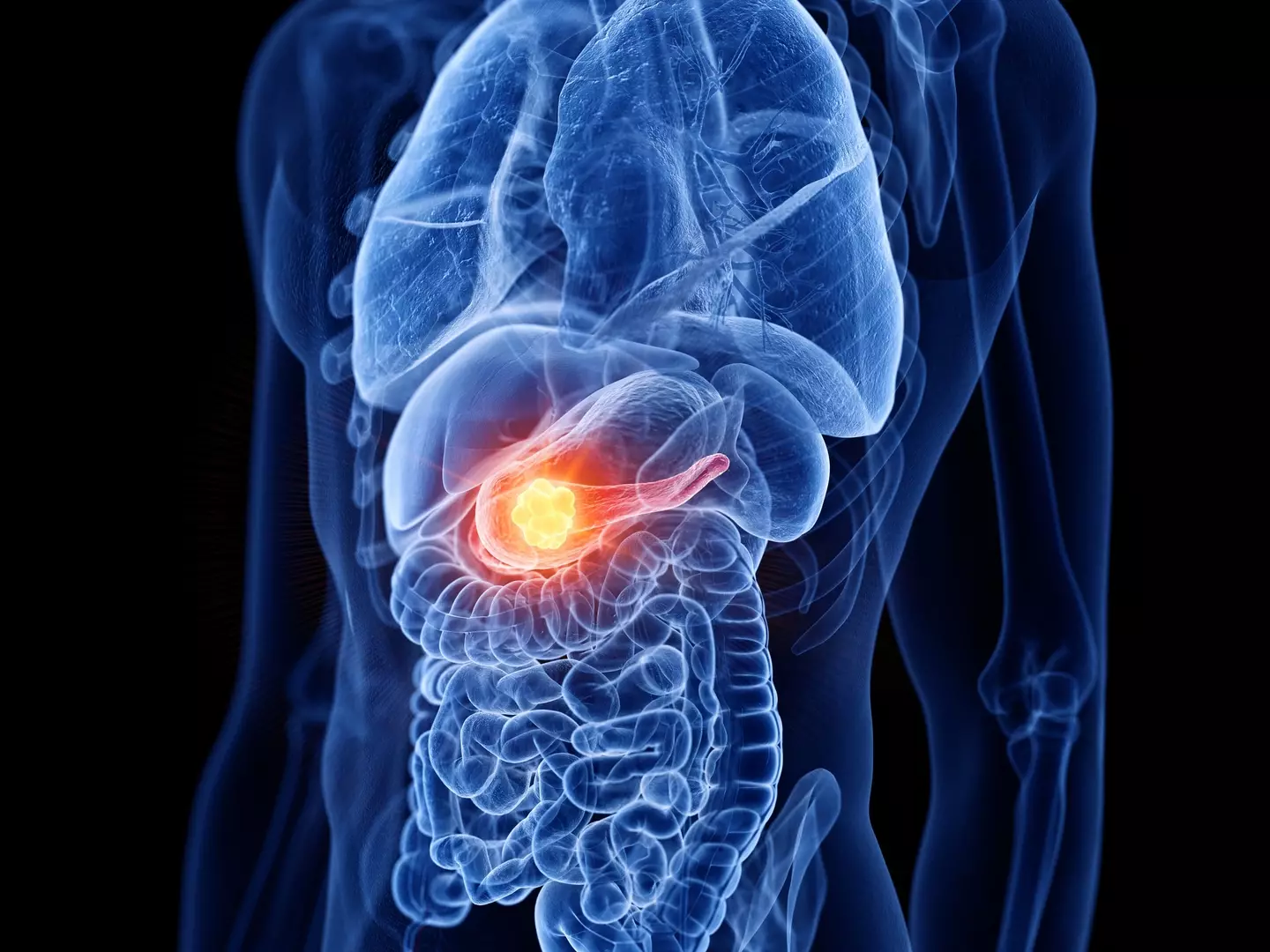
Pancreatic cancer is one of the most common cancers in the United States (Getty Stock)
Cancer Research UK states that additional signs include indigestion; sickness; diabetes; itching and fever; and shivering.
Another one is blood clots.
“Occasionally, pancreatic cancer is linked to blood clots,” the website says.
READ MORE:
WOMAN LEARNS SHE WAS A YEAR TO LIVE AFTER ASSUMING SYMPTOM WAS IBS
HOW TO PREVENT BLOOD CLOTS ON LONG-HAUL FLIGHTS
“They may form in the deep veins of your body, usually the leg. This is called deep vein thrombosis (DVT). Or blood clots can develop in smaller veins anywhere in the body. Sometimes the clots will disappear and then develop somewhere else in the body.”
Away from pancreatic cancer, blood clots themselves can prove fatal.

Deep vein thrombosis often occurs in a person’s leg (Getty Stock)
If you know you have a clot and start to get pain, redness and swelling around the area where it is, find the area around the clot is warm to touch, experience breathlessness, or get pain in your chest or upper back, then Cancer Research says you need to ‘contact your healthcare team right away’.
Coughing up blood is also another symptoms of when a blood clot has worsened and a sign you should seek out medical attention as soon as possible.
